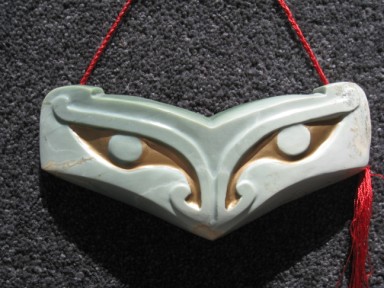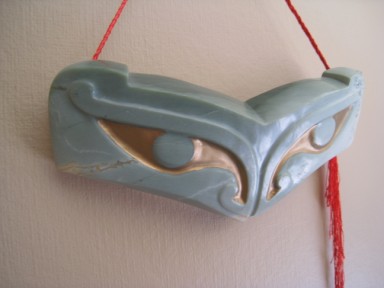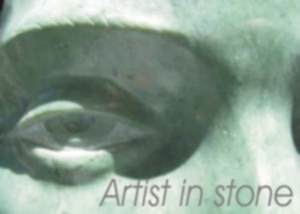


Glasses of Jing Shan
Medium: New Zealand jade
Dimensions: 180 mm x 75 mm x 45 mm
Background: The overall shape of this design is based on ancient Chinese sword hilt design. The face is based on aspects of the ancient Tao Tie mask. The story behind this carving is one of great sadness and joy.
In the Warring states period a peasant called Bian He discovered a jade boulder and presented it to the King of Chu. The jade was declared as not being genuine and Bian He had his right foot amputated as punishment.
When the king was succeeded Bian He again presented his stone, and again it was deemed ingenuine. This
time his other foot was amputated. When the third king ascended to the throne Bian He was carried to the palace gates
and wept. When the king asked why he cried, Bian replied it was not because he had lost both feet but that two kings
had rejected his jade as ingenuine and he had been punished for being a deceiver. The king responded
by having his royal lapidary inspect the stone. It was deemed to indeed be jade and found to be the purest and most beautiful
ever found. From this episode comes the expression Having eyes not recognising the jade of Jing Shan
,
in other words, 'having eyes but blind to good things'.
The historical event and person are real but the jade is no longer in existence. This story fitted so well with my concept of ethnoglasses that it needed to be realised - in a genuine jade.
The reference for this story is in Understanding Jade by Lee Siow Mong
